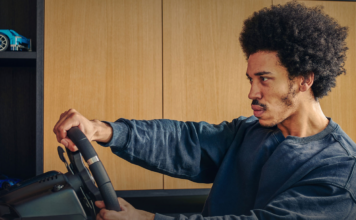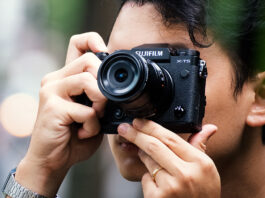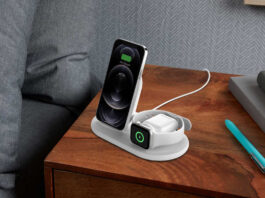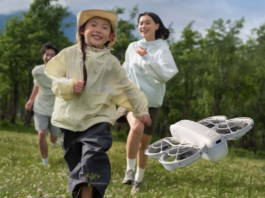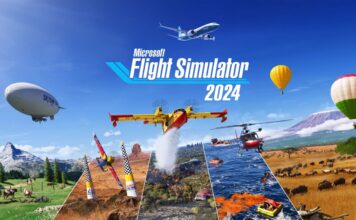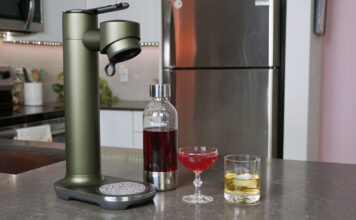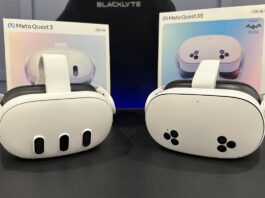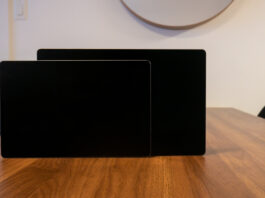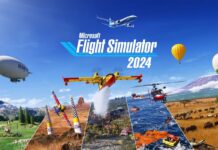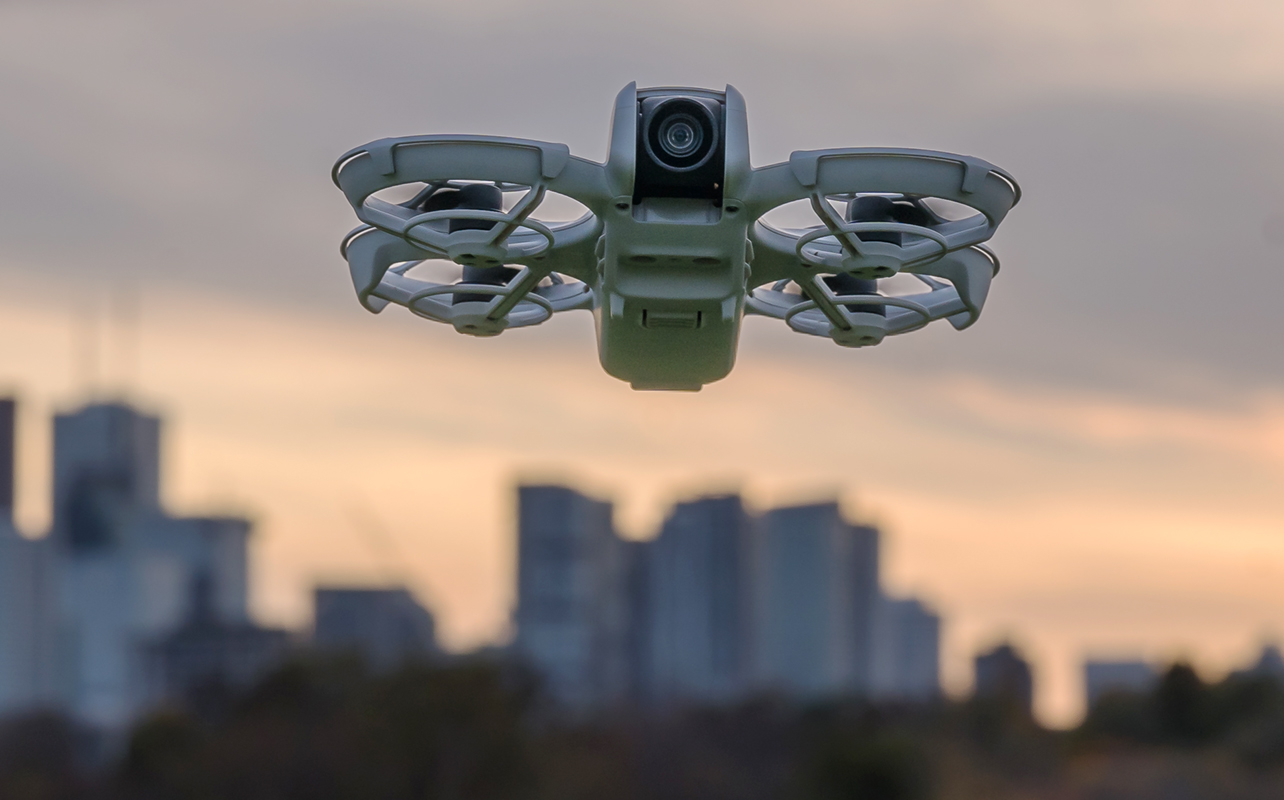
Not all drones are made for everyone, except the DJI Neo caters just as much to those who have no experience piloting one. It’s not just how small the drone is, it’s the level of automation and stability involved that builds confidence while it flies.
I lie somewhere in the middle myself. While I’ve tested several drones over the years, most were in the previous decade, and none (that were as small as the Neo) performed well enough to stand out over time. I got to test the Fly More Combo for this review. DJI built something that you can not only take with you almost anywhere, but can capture cool video and photos with little input on your part.
There are limits you have to take into account since this is a much more affordable drone compared to the rest of DJI’s lineup. Still, if you’re willing to put this thing in the air, it’s very likely you’ll come away impressed.
Looking at the DJI Neo in pre-flight
I covered the design details when DJI first announced the Neo, but the important takeaway is just how lightweight it is. Small enough to rest in your palm, it only weighs 135 grams, which is lighter than most smartphones. That also means you don’t have to register it or get a drone pilot certificate to fly it. It falls well below the 250-gram threshold required for those things. Despite that, you should still be careful and follow local laws while using it.
One of those in Canada is flying below 400 feet. Not a problem here because DJI caps altitude at 98 feet for the Neo when it takes off from your hand and/or you use the DJI Fly app (iOS or Android) to control it. The company lifts those restrictions to about 393 feet high (120 metres) when you use the RC Controller. However, you may not want to tempt fate with something this small going that high unless there’s little wind.
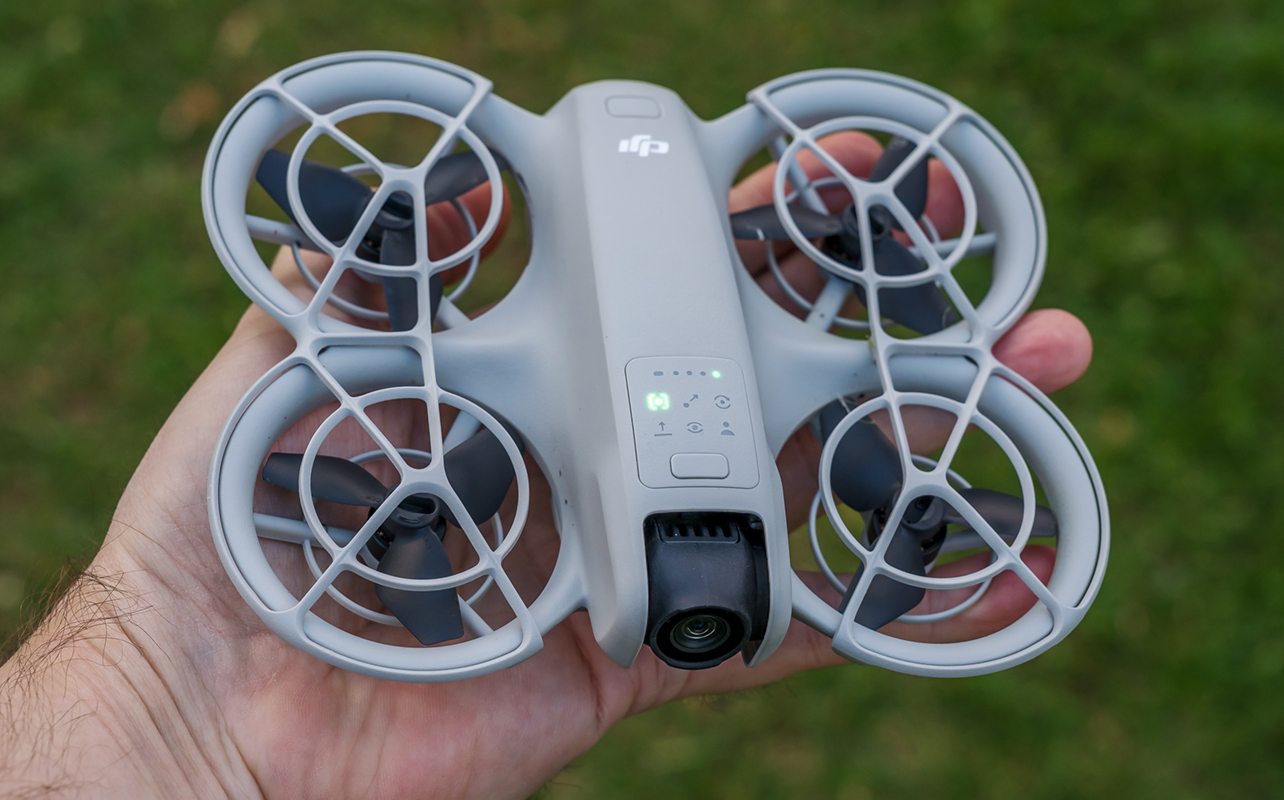
The Neo has guards you can remove if you ever need to replace any of the propellors. I find they are also good at keeping some distance from objects that might interfere with flight. They also keep your hand safe from contact during takeoff and landing. More on that later.
The camera at the front also has a protective shield you need to take off before flight. It’s a mechanical gimbal that moves on a Y axis, so you get vertical range at roughly 90-degrees either up or down.
Setting up to fly
The drone has a unique startup sequence. Press the power button once to see the battery LEDs light up on the control panel, then press and hold until you hear a beep and the rest of the panel lights come alive. You’ll also hear the electric motors kick in. To access automated modes, press the button on the panel, and you can cycle through the automated modes. Each one is indicated by both a symbol and voice guidance.
The six you get are: Follow, Dronie, Circle, Rocket, Spotlight, and DirectionTrack. Choosing them this way means you can use any of these modes without actually piloting the drone yourself through the Fly app or RC Controller. Very useful and convenient if you have a shot in mind but don’t have time to fiddle with your phone or have the controller handy. All you need to do is pick the mode, stretch your hand out, keep it stable, and a voice will count down to takeoff.
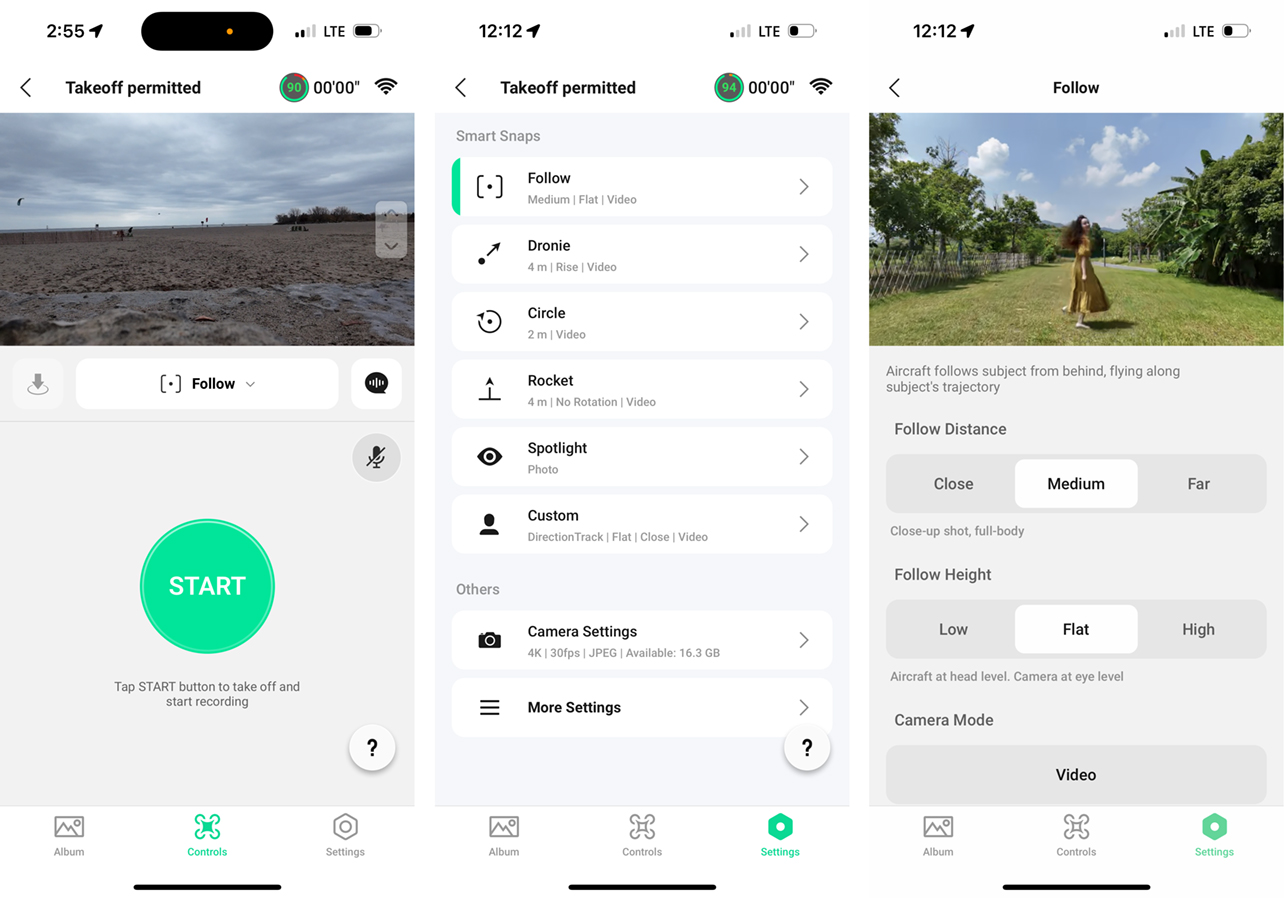
Since these modes are mainly about following a subject, the Neo locks in focus tracking during the countdown and maintains it once in the air no matter the mode. Some are based on movement, like Follow, Dronie, and DirectionTrack, whereas Circle and Rocket are primarily for stationary subjects. Spotlight works well with movement or no movement.
The Fly app is important because it’s also where you can set the parameters. For example, Circle flies 360 degrees at a default distance of two metres, but you can choose four, six, 10, or 20 metres in the settings. Same with Follow, where distance is “medium” and height is “flat” at head level. You can choose to change the distance to “close” or “far”, and the height to “low” or “high” instead.
Voice control
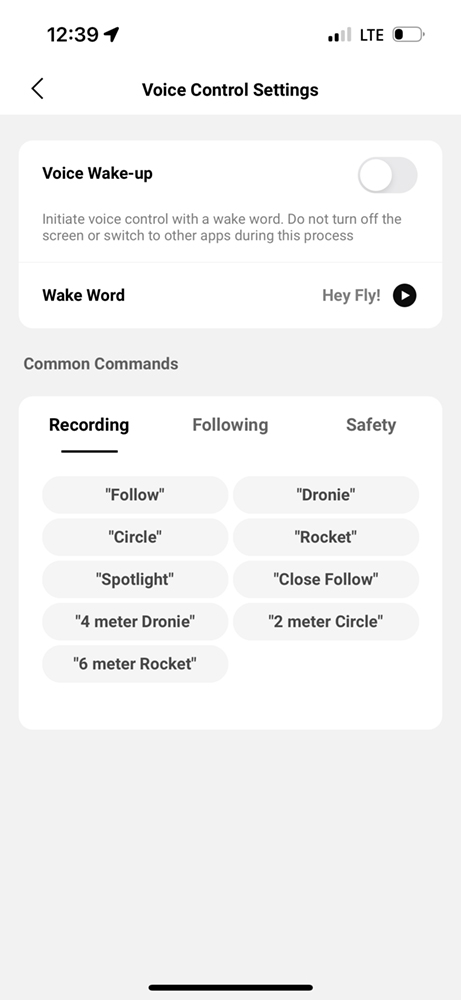
The options may feel limiting to more experienced pilots, but I see novices loving the simplicity. Even more so when you master the voice commands. Voice control settings are off out of the box but turn them on in the app and you can initiate voice control through a wake word. It’s “Hey Fly”, and it only works when you keep your phone screen on and leave DJI Fly open.
Once it takes off, you can then tell the drone what you want it to do. For example, say “Hey Fly, Close Follow” and it will set up for that. Substitute “10 metre Rocket” and it will elevate to capture that. “Hey Fly, Spotlight” and it will hover in place, rotating to follow you or whatever subject you’re focused on. For safety, you can also say, “Land”, “Brake”, or “Stop”.
I noticed some limits along the way. For example, I tried to say, “Hey Fly, Close Low Follow,” or “Hey Fly, Low Close Follow,” and neither worked as far as lowering the Neo to a lower altitude as that mode allows. I had to set the height manually in the app first and then use voice control.
Either way, the phone’s microphone needs to hear you, which can be tough in a noisy environment. You can use Bluetooth earbuds paired with the phone to get around that, which proves really convenient.
Remote control
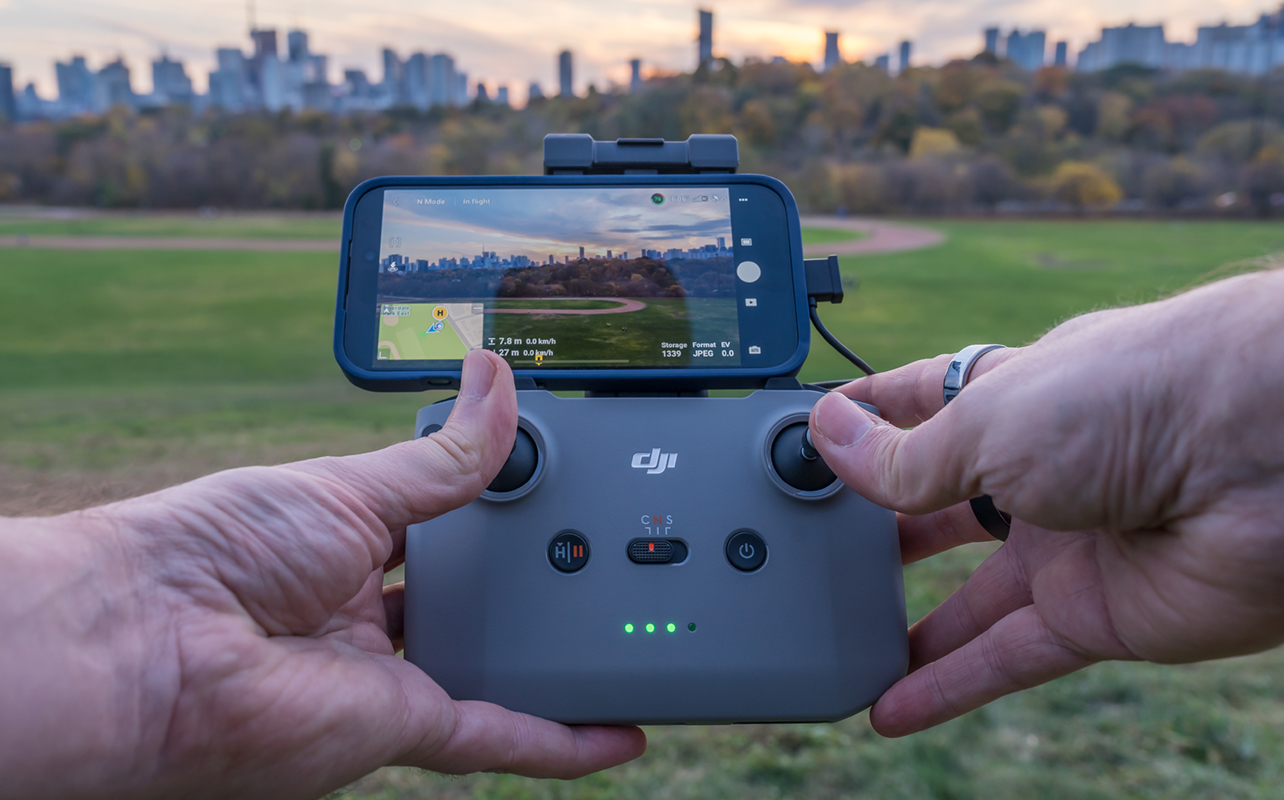
DJI’s RC-N3 Controller is more about manual control over everything the drone does in the air. The joysticks come out of the bottom of the Controller and are easy to attach. There’s nothing to calibrate, though pairing the Neo with the Controller requires a few steps. The key one is going through the Connection Guide to establish the connection so that they seamlessly connect to each other every time thereafter.
Piloting the Neo with the controller feels very different, and that’s mainly because of the precision and pressure from the joysticks. The Fly app has onscreen controls, only you can’t be all that gentle with lateral movements. For example, while moving up or down feels smooth, sideways is less so, and rotating looks sudden and jerky.
The Controller has two modes—Cinematic and Sport—you can use to help out. Cinematic slows down all movement for more movie-style footage, whereas Sport speeds it up to make it easier to track activity. Indeed, when using your phone as the live feed, you can draw a box around a subject to make the Neo stay focused there.
If you’re new to drones, I recommend practicing with the Controller in smaller spaces to learn how responsive the Neo is. Even more so since the limits imposed by the Fly app aren’t as extensive when piloting the drone this way.
Image quality
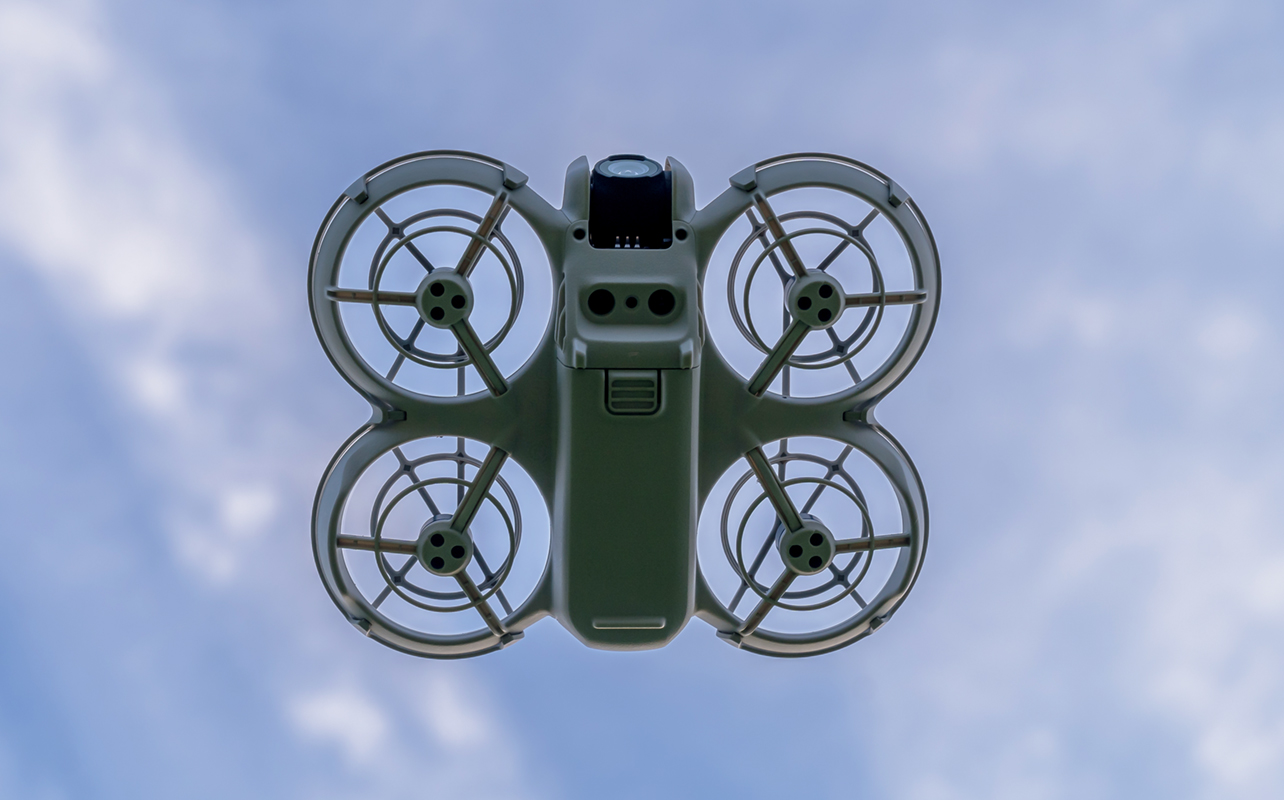
The DJI Neo can record video in 4K at 30fps. That’s great for something this small, though you can also drop it to 1080p HD if you don’t want to go to 60fps, which might be more preferable when trying to capture some action. It has a pretty expansive 117-degree field of view that can really take in wide vistas and skylines. For photos, you can get 12-megapixel images.
Given the Neo’s size and image sensor, the best results will come in ideal lighting during the day, though you can certainly capture beautiful sunsets like I did. Footage won’t match the higher quality you’ll get from the best smartphones under most cases, but the kind of shots you get with the Neo makes it a perfect complement to a phone. If you’re a content creator or aspiring filmmaker, I can see this as an excellent tool to experiment with.
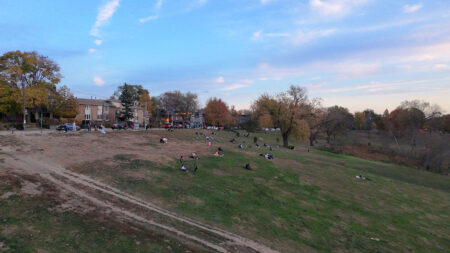
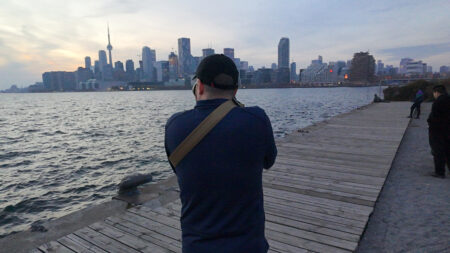
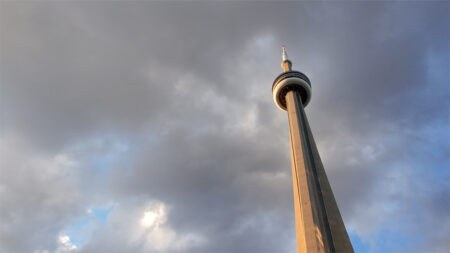
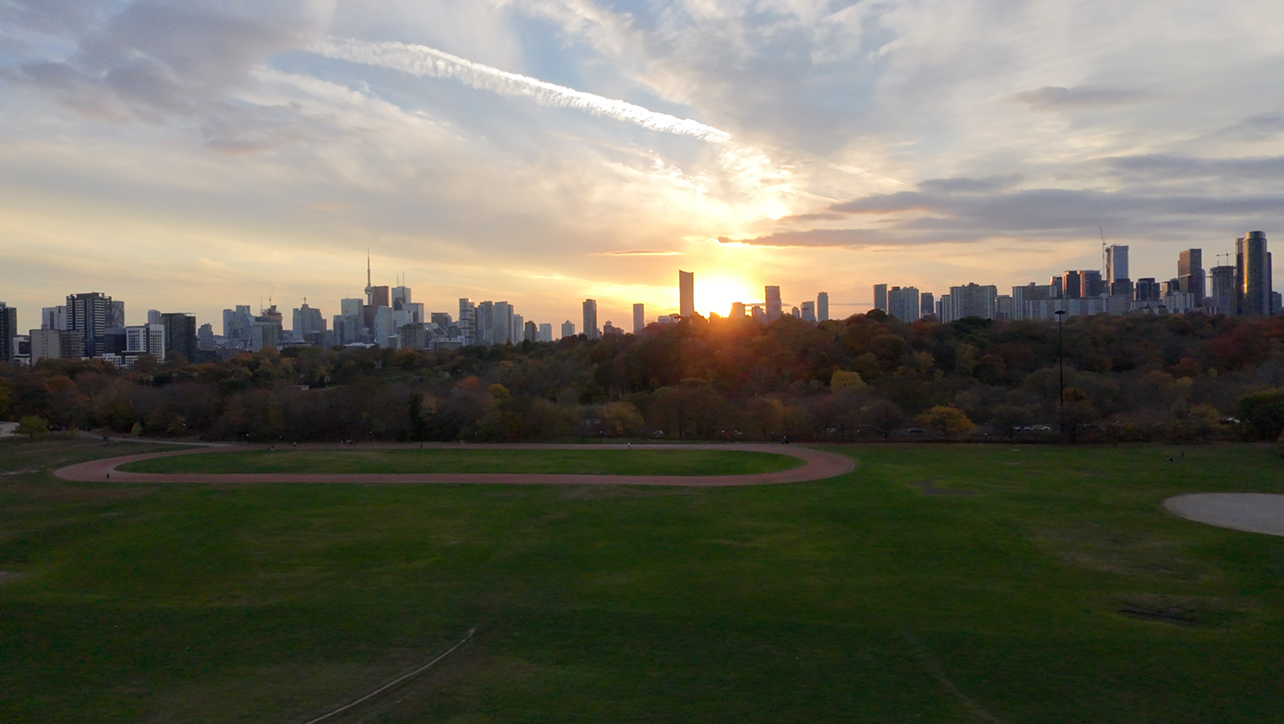
There are nuances along the way, though. Humans and animals will look better under the best lighting whereas lower light tends to lose detail. At night, you get more grainy and noisy images that lack the punch you get with good lighting.
This applies to still photos as well as video. While you can use the Fly app to view and download photos/videos directly to your phone, the DJI Mimo app can go further by letting you edit clips and create quick video compilations as well. What neither app lets you do is extract a still photo from a video. You’ll need to try that somewhere else.
What’s most impressive is the Neo’s stability, even if not every clip turns out as a winner. It maintains excellent panning and focus in those automated modes, lowering the learning curve in capturing scenes with little flying experience.
Things to consider with the DJI Neo
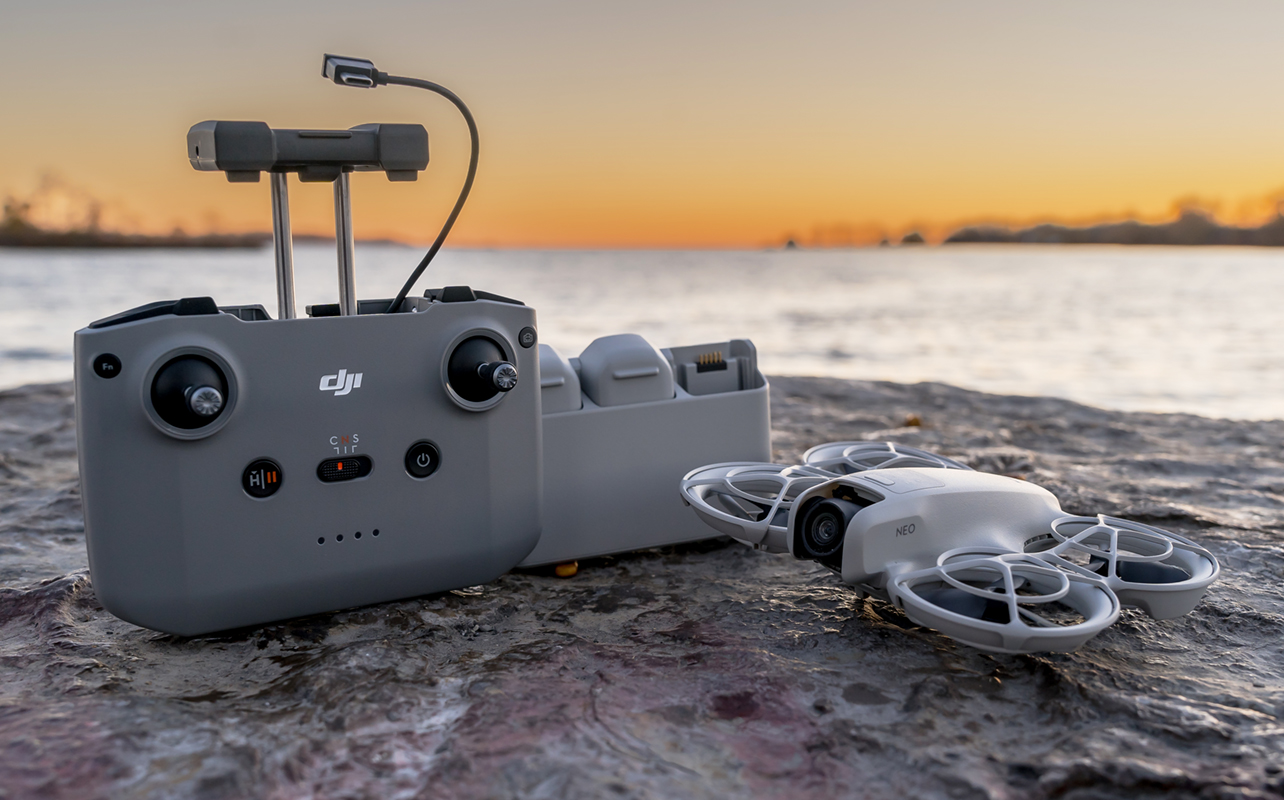
If you plan to use the DJI Neo to create content, particularly with you talking, I recommend using a separate mic. While small, this drone is loud and not ideal for picking up clear voices. Don’t expect it to fully suppress the buzzing noise, either. A lavalier mic connected to your phone is a good option, letting you line up the audio with the video later in post-production. DJI also has its own wireless microphone in the Mic 2 for just such a purpose.
For travel, it feels like a perfect camera to bring along for mesmerizing images. You always have to be aware of your surroundings and local laws but it should work really well when you’re careful enough. If you do plan to do that, I think getting a proper case for the drone and accessories is worth it.
No matter where you are, you have to be mindful that, without any obstacle avoidance, the Neo can crash hard if you’re careless. It doesn’t have the kind of durability larger models do, and it’s much harder to spot from further away, so you can’t afford to be lackadaisical while it’s in flight.
Battery life
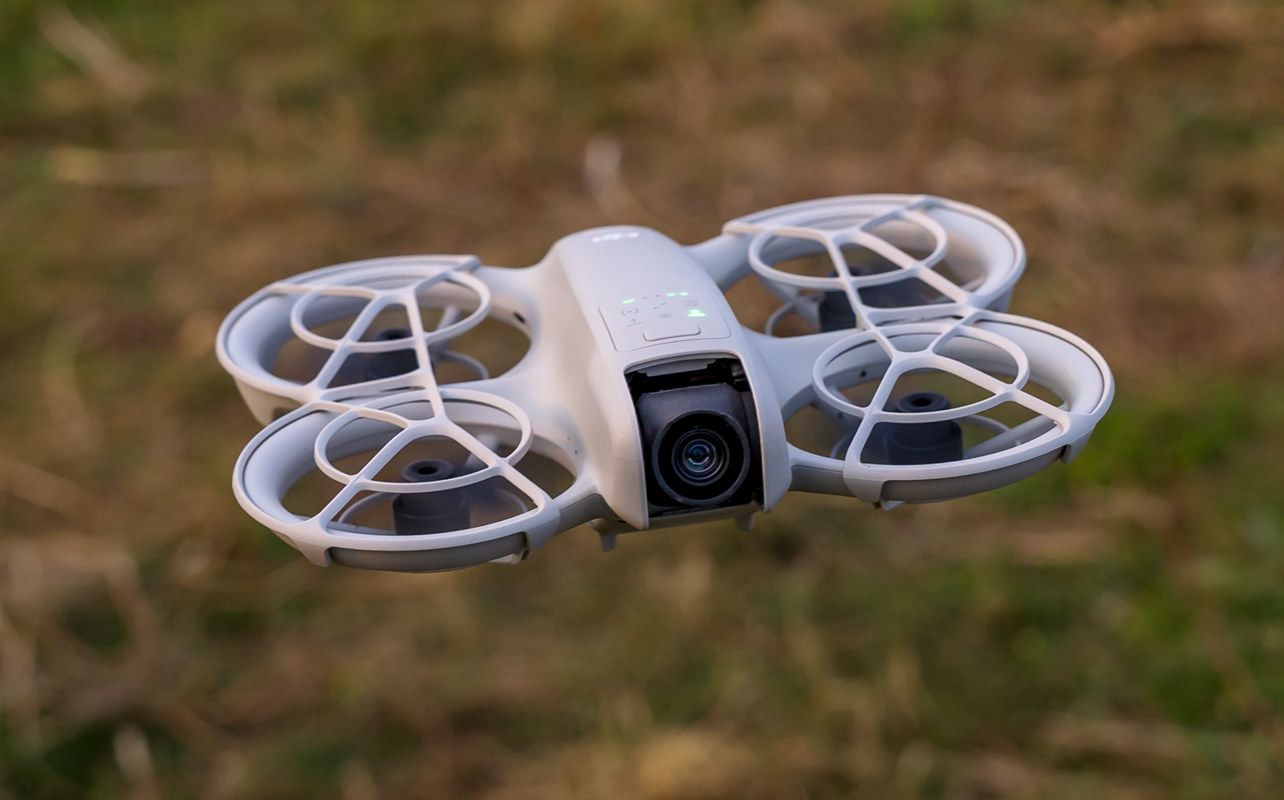
DJI rates battery life at 17 minutes, which is optimistic. You might get there if you’re flying the drone indoors and not moving it much, but when the stabilizers have to work to hold it steady outside in the face of wind gales and gusts, the battery takes a hit.
It’s one of the biggest reasons why I feel the DJI Neo Fly More Combo is worth it. You get two extra batteries and charging cradle for all three, significantly lengthening your overall flight time. I routinely had to switch out batteries while testing the Neo for this review. On average, I was getting over 10 minutes but never really getting close to 17 at any point.
Final thoughts
Drones have a “cool” factor unlike other electronics, in part because they’re misunderstood by many. I don’t say that as a negative but more recognizing that they can be intimidating for those who’ve never tried flying one. The DJI Neo feels like a tricycle to me in that respect. You can fly it almost exclusively for its automated modes and come away feeling like you’re operating something extraordinary. With greater confidence, you might eventually learn how to do incredible things flying manually too.
That’s the mark of a solid product. It not only works, but evokes feeling and discovery along the way. I attracted a fair bit of attention having the Neo follow me while walking out in public, much like I did when capturing a skyline sunset. I didn’t want the attention, personally, but creating content can drive curiosity, and that really sums up the Neo.
The DJI Neo drone is available now at Best Buy.

